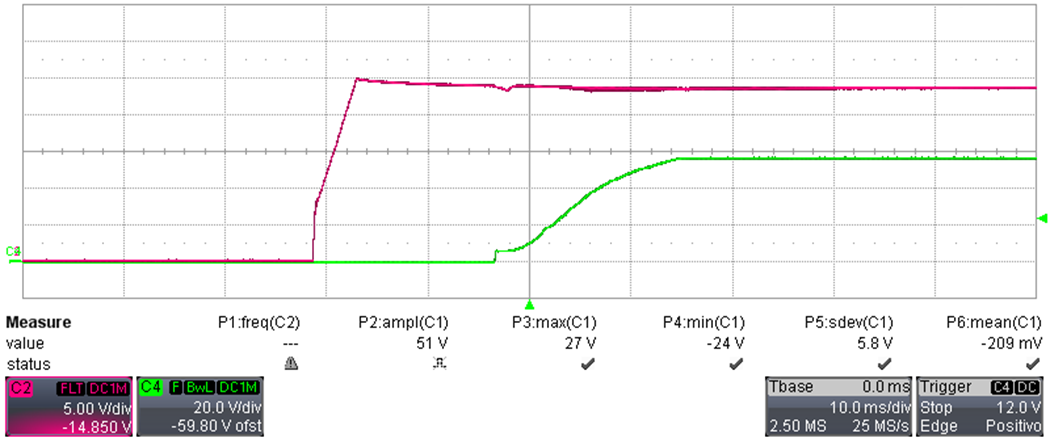TIDT308 October 2022
3.4.1 Full Load
 Figure 3-7 Start-Up With Full
Load
Figure 3-7 Start-Up With Full
Load- Channel C2: Input voltage (5 V /div, 10 ms / div, DC coupling, 20-MHz BWL)
- Channel C4: Output voltage (20 V/div, DC coupling, 20-MHz BWL)
TIDT308 October 2022
 Figure 3-7 Start-Up With Full
Load
Figure 3-7 Start-Up With Full
Load